
Whether you’re wanting to add some new life to an existing garden bed or start a new one, it's fun to think about all the possibilities to improve your perennial garden. But it also can be overwhelming if you don't know where to start.
Keep in mind that proper planning is more than just seeing a pretty-looking flower and planting it anywhere that it fits. There’s a lot more involved than just grabbing what looks good. Landscape design is both a science and an art form. Wondering what perennial plants look good together?
Start with these 3 tips to get the best perennial plants for your budget
1. Location, Location, Location.
Just like real estate, think about where you want to have your garden and keep an eye on it for a few days to see the amount of sun it gets. Remember that as the days get longer, areas of your yard will get more hours of sunshine. The location of your chosen plants is critical to their survival.
How big do you want your garden to be? Can you expand the space? Want to scale it back? Pay close attention to the height and width of the plants you want. Be sure to choose plants that will fit the space and not overcrowd.
And if your perennials spread, make sure they don't crowd out more delicate varieties.
Take note of the mature size of the landscaping plant and plan the number of variety of plants to accommodate.
2. Pick Your Color Palette
What colors do you like the most? Be sure to group plants that complement each other in color and also in size.
All of these must be considered in relation to the other plants around as well. When you’re planning, try not to think of plants as individuals, but in pairs or groupings.
You can also mix annuals and perennials to get the pop of color in areas that have spring-blooming perennials.
3. Arrange Perennials & Annuals By Size
Always plan for the mature size of the plants, and layer them by planting the shortest ones in front. You don't want your beautiful coreopsis to go unnoticed because it's planted behind ornamental grasses!
If you are planting annuals, do a bit of research and plant them based on their mature size and bloom time. Most annuals are small enough that they should be planted in the front of the landscape, but that's not always the case!
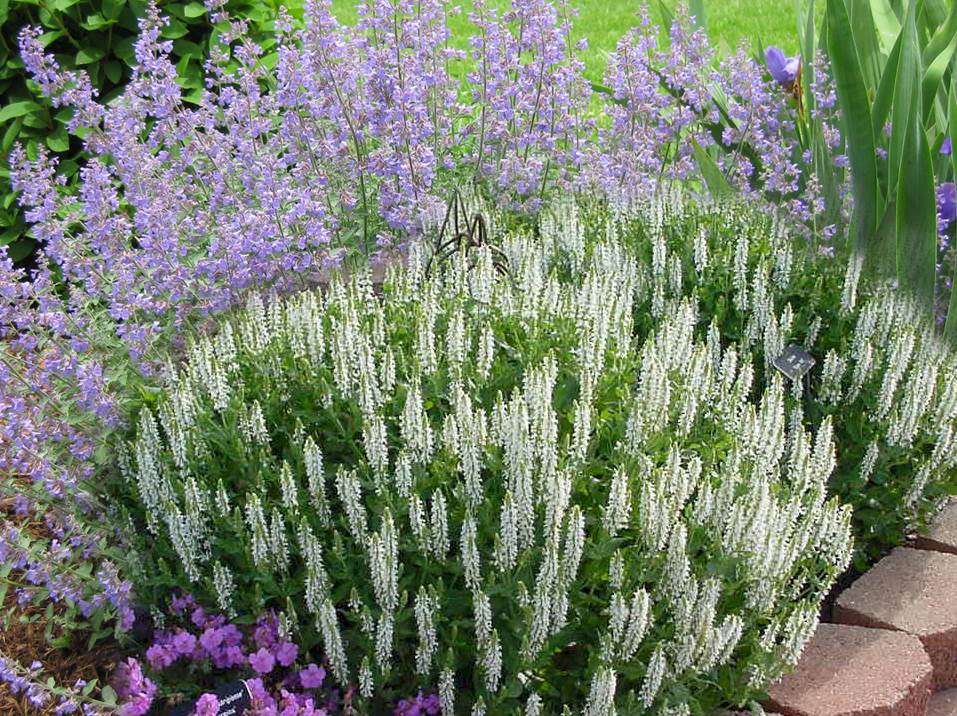
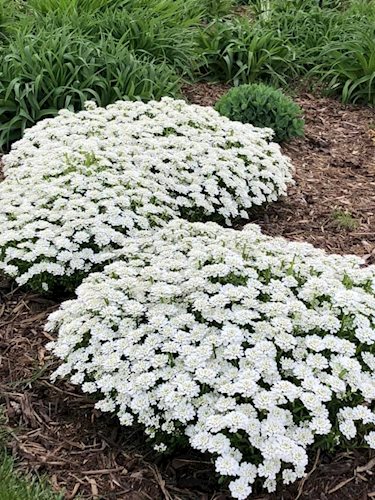
Find the Best Plant Combinations for Your Yard
If you live in the Midwest like we do, there are hundreds of combinations that can work, and it can be a bit overwhelming to figure out what perennials can be planted together. Luckily, the best plants for Illinois work for much of the Midwest climate. Here are a few of our favorite perennial plant combinations:
Perennial Combinations That Work
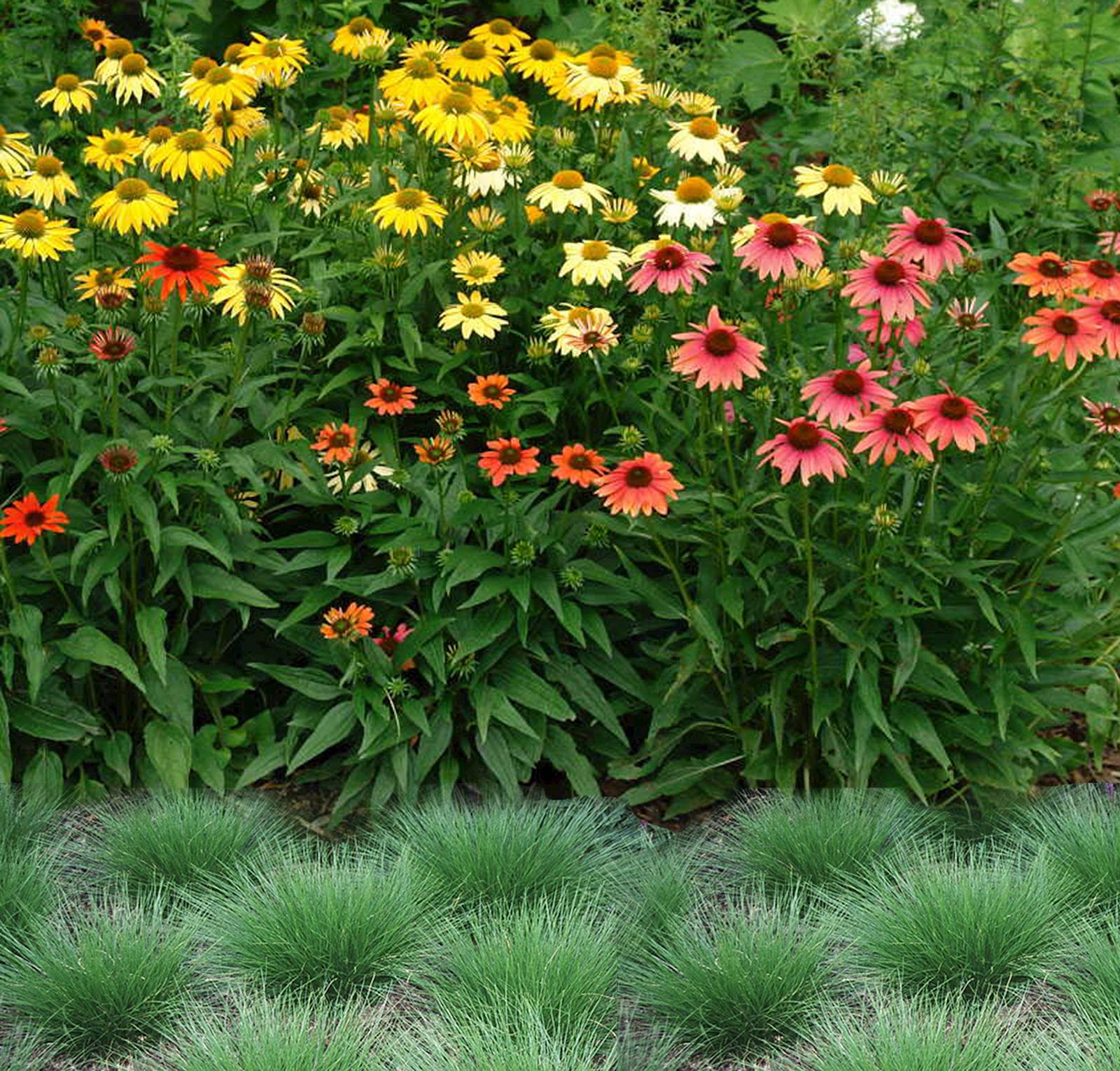
Sporobolus heterolepis (prairie dropseed) & Echinacea (coneflower)
Prairie Dropseed is a beautiful, airy, and compact grass that is incredibly hardy. It will mature around 18” to 24” tall and wide. The see-thru appearance creates a soft and inviting look that gives a calm sense to the landscape. As the grass first emerges in April and May, it is a beautiful green color that is welcomed after the winter months. Starting around the end of September, the color starts changing to a yellow-green, then golden-yellow, creating a season-long interest of color.
Pair all of that with a bright and colorful planting of coneflower, and you have a stunning combination. Coneflowers come in many different colors so you can choose your favorite; almost any color will stand out against the green foliage of the Prairie Dropseed. Depending on the variety you choose, Coneflower will grow to be anywhere from 24” to 48” tall. We recommend planting a variety that is taller than the Prairie Dropseed, so it can show off the beautiful blooms and give you some nice height variation. Even after Coneflowers are done blooming, they can provide some wonderful fall and winter interest with dark shades of stems and decorative seed heads.

Nepeta ‘Cat’s Meow’ (catmint) & Salvia ‘Bumblesnow’
This variety of Nepeta has dense and colorful flowers, with an upright growing habit with no flopping. At its mature size, it will get 18” tall with a spread of 24” – 36”. The beautiful blue flowers will stand out with almost any plant that you have in the landscape; making it a wonderful pair with many different plants. It starts blooming in late spring to early summer and continues to lightly bloom into early fall.
Salvia is a garden favorite because it is so reliable and hardy. Pairing the white blooming ‘Bumblesnow’ with the blue flowers of the Nepeta creates a soothing and soft-colored mix of hues. Once the Salvia is done blooming, it can be cut back to promote reblooming and new growth. Its color can last almost as long as Nepeta, providing a wonderful display all summer long.
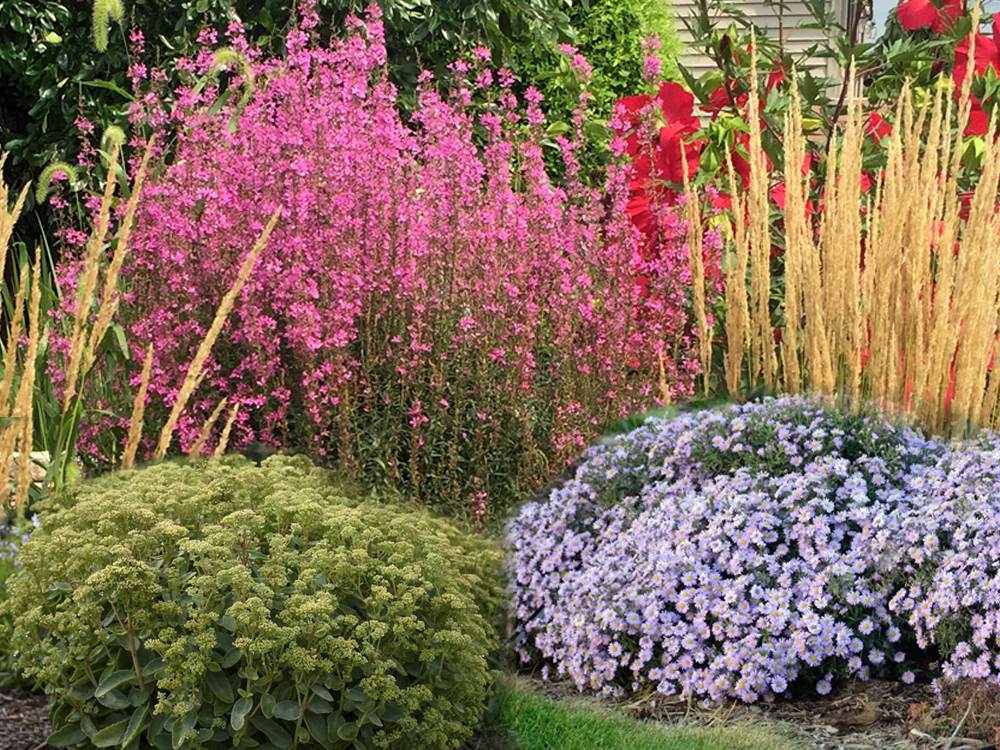
Lythrum ‘Purple Dwarf’, Sedum ‘Lemon Jade’, & Aster ‘Kickin Lavender’
Dwarf Lythrum is one of our favorite perennials for many reasons. It’s a showstopper by itself, and when it’s planted with some nice companion plants it really brings a new life to the landscape. It will start flowering around late May or early June and keep going all the way until September. Standing up to 3’ tall, the bright pink blooms stand out for a burst of color.
Sedum ‘Lemon Jade’ blooms a citron yellow bloom in the fall to continue the color throughout your landscaping. As the sedum starts to grow in spring and summer, before it blooms, it has very distinct mounding foliage. This creates an interesting contrast with the blooming Dwarf Lythrum that provides a sort of groundcover underneath. Then as the Dwarf Lythrum blooms start to fade, the Sedum will start to open up its blooms to make sure there isn’t a bare spot in the landscape.
The ‘Kickin’ varieties of Aster are prolific fall bloomers. Growing to 24” tall and wide, they form a dense mound that is covered in blooms in the fall. Similar to the Sedum, they will start blooming soon after the Lythrum fades out. The lavender color blooms, coupled with the yellow blooms of the sedum, make a great splash of late-season color. Another great reason to plant this grouping of plants is that they all attract butterflies, birds, and friendly pollinators!
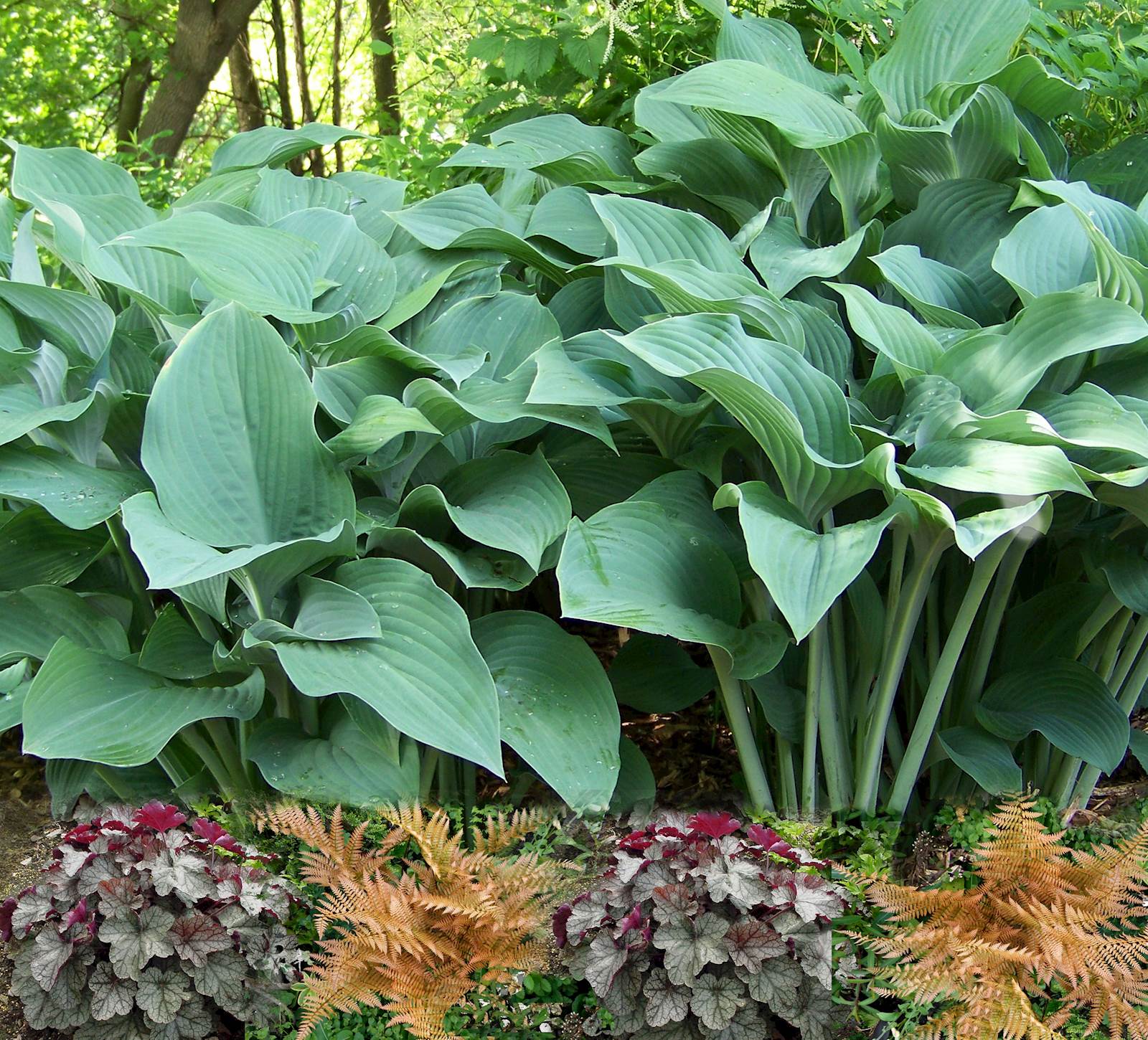
Hosta ‘Krossa Regal’, Autumn Fern ‘Brilliance’, & Coral Bell ‘Palace Purple’
This is a great combination to use in any shade garden. You’ll have a great mix of size, colors, and textures. This hosta has a unique vase-shaped growing habit that allows for some shorter plants to grow underneath. It has large blue-green to gray-blue leaves and trumpet-shaped lavender flowers in the summer. As with other hostas, you’ll need to watch out for slug damage, but this variety has good slug resistance.
This Autumn Fern is an incredibly colorful addition to a shaded area. New fronds are a striking orange-red shade that is a beautiful contrast against the foliage of the hosta. As the summer approaches, the color matures to a glossy, deep green and eventually returns to its reddish color after the first fall frost.
Palace Purple Coral Bells are known for their deep purple foliage, which is offset by small white flowers in the summer. This color is another great contrast to the leaves of the hosta and the deep green summer color of the fern. Only growing 12”-18” tall, it also makes a great border plant for a shaded landscape. This plant is also considered a semi-evergreen, holding onto much of its foliage color in the winter months.
Get These Landscaping Plants for Your Yard!
This is just a small sample of some plants that look good together. These plants also grow well in Illinois. We'd love to talk to you about how you can use these combinations, or design new perennial plant combinations just for your yard! You can also take a look at our online catalog to create your own combinations or find more ideas in our portfolio.
No-contact consultation, ordering, and pickup, give us a call at 217-227-3256.
CALL PATTY TO GET STARTED!